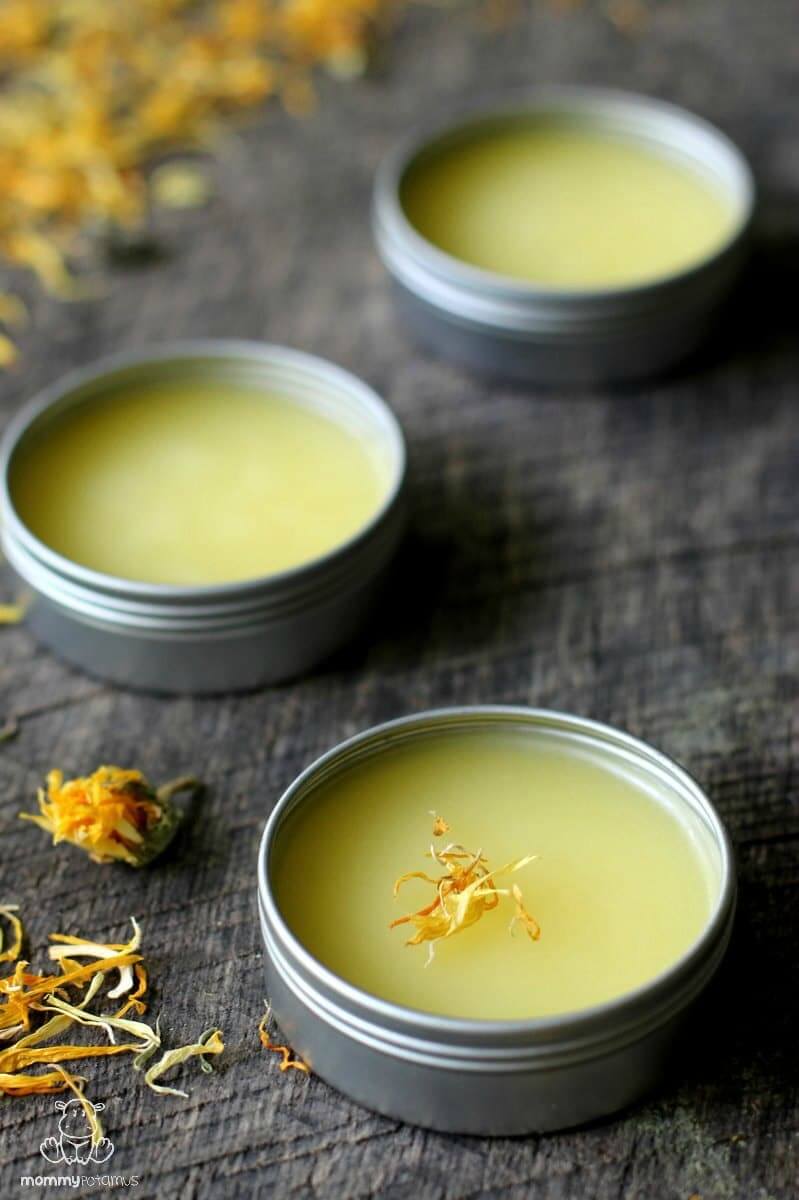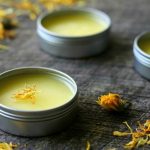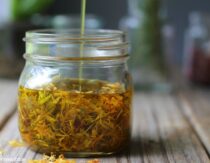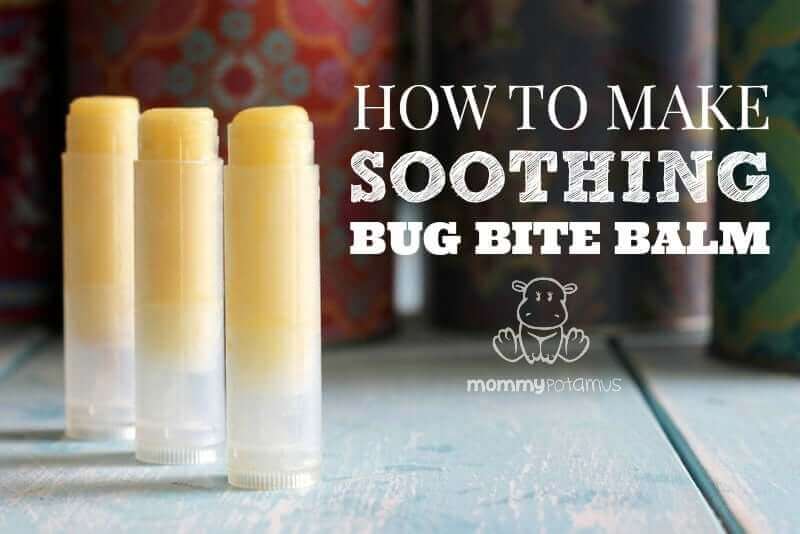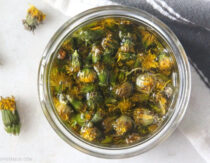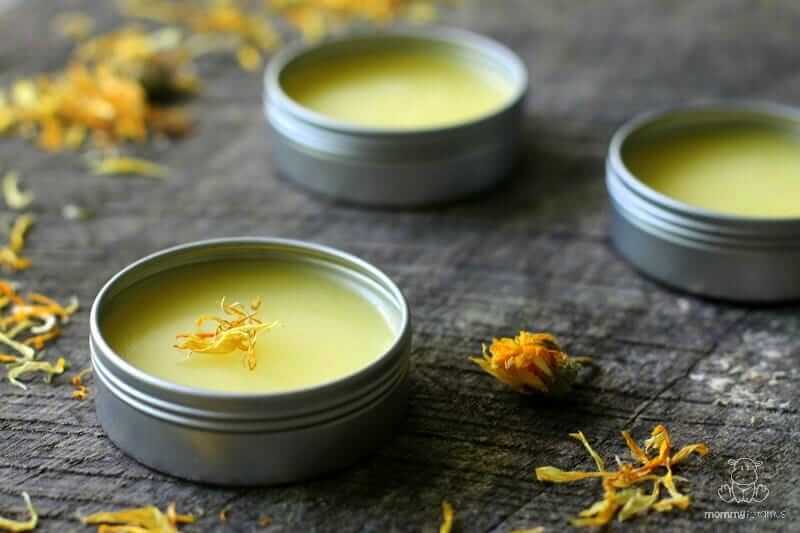
It’s the secret ingredient in many healing balms and skincare products, and for good reason. Calendula petals are rich in compounds that nourish, hydrate, and support skin healing, which is why they’ve been used for centuries to help with everything from pinkeye and sore throats to skin irritations. But don’t think you need a cut or scrape to make use of it – I apply it to my face and love the way it makes my skin glow!
A few weeks ago I shared two super simple methods for making calendula infused oil at home, and now I’m going to show you how ridiculously easy it is to make it into an #allthethings skincare salve. By #allthethings, I mean it can be used as a:
- face moisturizer
- chapped-lip balm
- baby bottom balm
- owie salve
- burn salve
- bug bite balm
Seriously, this stuff is so amazing I carry a little tin of it in my purse. These 2 oz. tins are the perfect container for it, plus other personal care products like this children’s chest rub and these bug repellent lotion bars.
They also make a gorgeous gift container for moisturizing lotion bars.
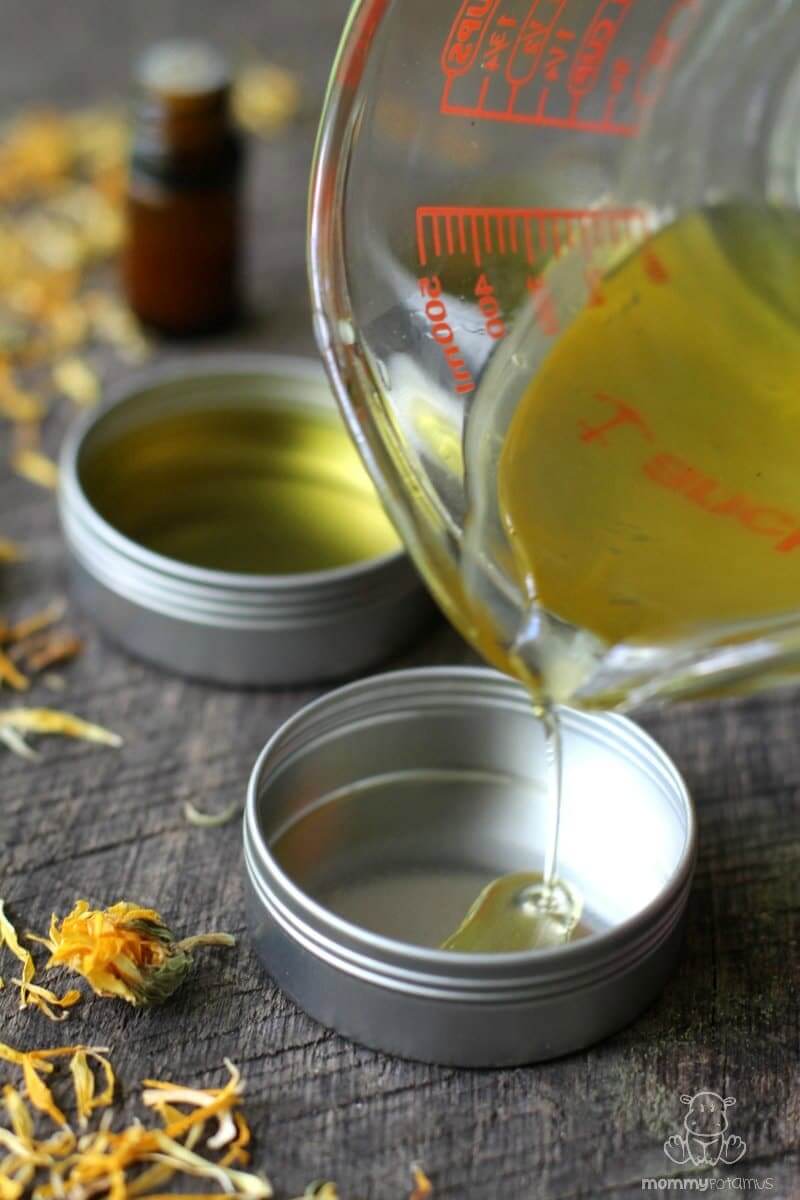
About The Ingredients
Calendula Infused Oil – Made by infusing calendula flowers into a carrier oil such as olive oil, jojoba oil, sweet almond oil, calendula oil can be used as a massage oil, a base for skin salves like this one. It can even be drizzled over salad if you use an edible carrier oil – olive oil is, while jojoba oil is not.
You’ll find two methods for making it here, but if you want to skip the infusion process, you can buy pre-made calendula oil here.
Beeswax – In addition to firming up the salve, beeswax helps skin by forming a protective barrier and helping to seal in moisture so that skin stays hydrated.
Essential Oils – I love the earthy, herbaceous scent of calendula, and truly it’s an ingredient that stands on its own. However, there are several essential oils that can be complementary based on what you are trying to achieve. A few of my favorites are:
- German chamomile(Matricaria chamomilla L) – Soothes congested skin. Also relaxing, helpful for sleep, and may support clear thinking when pollen counts are high
- Frankincense carteri (Boswellia carteri) – Used to support youthful looking skin and soothe cuts, bruises and other injuries. Relaxing and considered helpful for immune support.
- Frankincense frereana (Boswellia frereana) – Prized for its skin rejuvenating properties, frankincense frereana is also used for cuts, bruises and other injuries, nourishing mature skin, and supporting immune function.
- Lavender (Lavandula augustifolia)- Calming, helpful for soothing bug bites, sunburns, and other skin irritations
- Tea tree (Melaleuca alternifolia) – Helpful for cuts, scrapes, and supporting clear, smooth skin. Also considered supportive to the immune system.
- Carrot seed (Daucus carota) – Thought to be beneficial for supporting skin elasticity and healing. Most people don’t like its aroma, though, so I suggest blending it with another essential oil or putting it on at night just before bed. Safety note: Carrot seed oil is not recommended for mamas who are pregnant or breastfeeding.
DIY Calendula Salve Recipe
Ingredients
- 4 oz. calendula infused oil (you can make your own calendula oil using this recipe, or buy pre-made calendula oil here)
- ½ oz. beeswax (by weight, that's about 2 tablespoons of beeswax pastilles or grated, packed beeswax)
- 25-50 drops essential oil (optional – lavender, frankincense, chamomile, tea tree or carrot seed are good choices)
Instructions
- Gently heat the beeswax in a double boiler. If you don’t have a double boiler you can use a stainless steel bowl set inside a pot of boiling water.
- When the beeswax is melted, add in the calendula oil. Allow it to warm up for 30-60 seconds, then stir until the beeswax and oil are thoroughly mixed.
- Remove the mixture from heat. If you’re adding essential oils, wait until it cools just a little and then stir them in.
- Pour your salve into a clean, dry glass jar or container and allow it to cool. The recipe above makes three of these 2 ounce tins. Now you’re ready for the next bug attack, bee sting, scrape, etc.
Notes
More Herbal Oil Recipes
- Dandelion Oil – Like calendula, dandelions are a member of the Asteraceae family and are well-known for their skin-soothing benefits. During the spring and summer you can gather them for free to use in dandelion salves.
- Comfrey infused oil – Sometimes called knitbone or All Heal, comfrey has been used for centuries to support bone and wound healing. It’s also often used in skincare products due to its moisturizing properties.
- Plantain oil – Plantain is sometimes called the “band aid” plant because – thanks to the presence of iridoids – it has a very soothing, anti-inflammatory effect on skin. It also contains allantoin, which supports skin healing.
- Arnica Oil & Cream – Arnica has been traditionally used by Swiss mountaineers to prevent muscle soreness, and according to The New York Times, “scientists have found good evidence that it works.” When I injured my shoulder awhile ago, I made up a batch of arnica cream to use along with physical therapy. It was so helpful!
Want more research-backed natural remedies?
No problem, I’ve created a free ebook for you – Kitchen Apothecary: 25+ Natural Remedies Using Ingredients From Your Pantry – as a gift for signing up for my newsletter. You’ll also get updates when I post about safe essential oils for pregnant/breastfeeding mamas, exclusive gifts and coupons (I was able to give away a jar of free coconut oil to anyone who wanted it recently!), plus other goodies.
Sign up using the form below.

